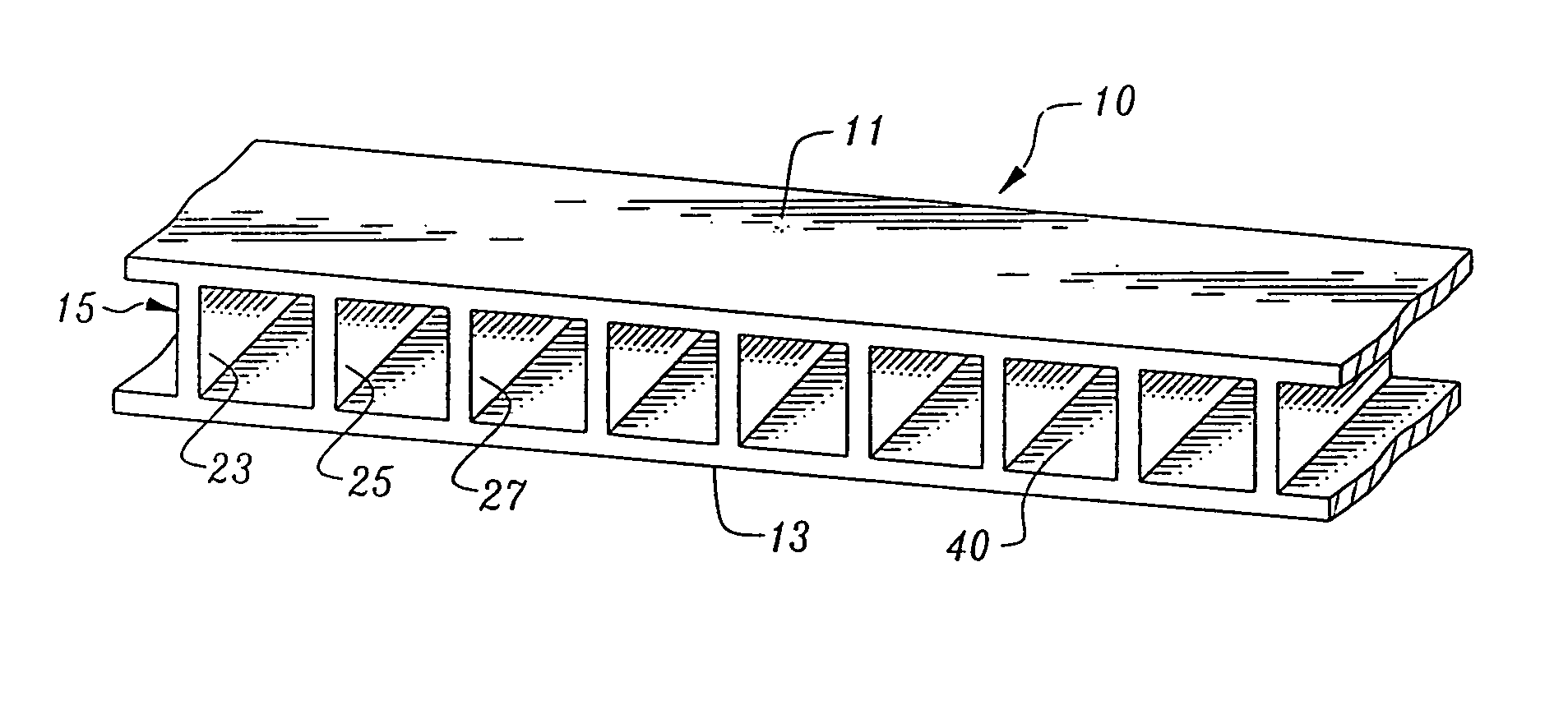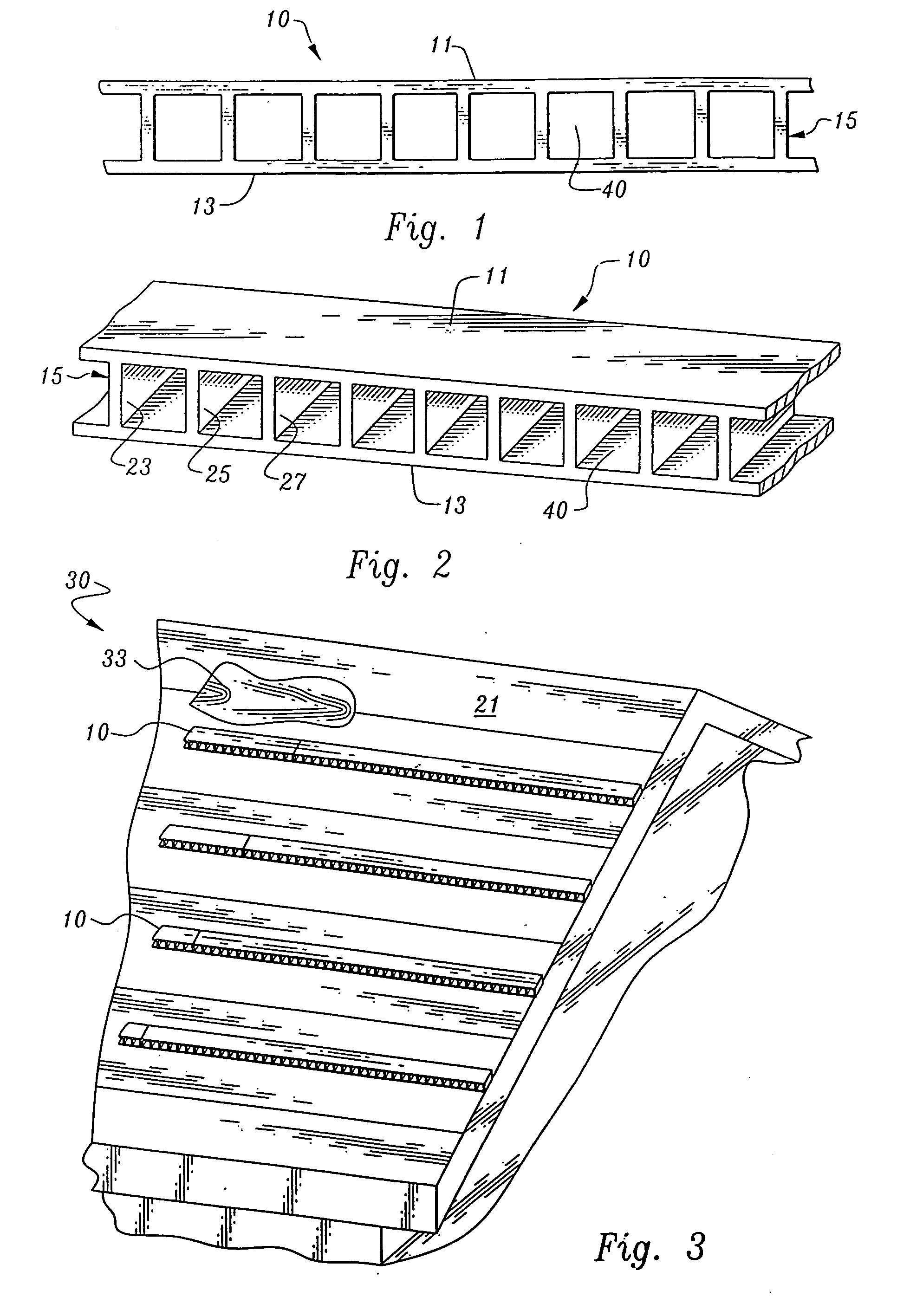Roof batten
a technology for roofs and roofs, applied in the field of roofs, can solve the problems of deterioration of roofs, permanent damage, interior mold, etc., and achieve the effects of reducing the number of roofs, facilitating production, and facilitating ventilation and drainag
- Summary
- Abstract
- Description
- Claims
- Application Information
AI Technical Summary
Benefits of technology
Problems solved by technology
Method used
Image
Examples
example 1
[0080] A roof batten is made by an extrusion process, using polypropylene heated and passed through a die to give the following dimensions. The batten is ½ inch high (12.7 mm), and 48 inches (1219 mm) long.
[0081] The plastic support structures of the battens are 0.044-inch-thick (1.12 mm)along the top and bottom surfaces, and 0.038-inch-thick (0.97 mm) in the region at the center of each of the vertical struts, gradually increasing in the outer regions of the struts closer to the interface with the surfaces, to about 0.062 inch thick (1.57 mm). The struts and upper and lower surfaces form chambered openings measuring 0.372 inch wide by 0.412 inch high (0.94 by 1.05 cm). One-hundred and fourteen chambers are formed in the batten.
[0082] Viewed from the front, each chamber of the batten has a square area of approximately 0.987 cm. From the same front view, the square area occupied by the plastic structural elements, surfaces and struts, corresponding to each chamber, is only about 0....
PUM
 Login to View More
Login to View More Abstract
Description
Claims
Application Information
 Login to View More
Login to View More - R&D
- Intellectual Property
- Life Sciences
- Materials
- Tech Scout
- Unparalleled Data Quality
- Higher Quality Content
- 60% Fewer Hallucinations
Browse by: Latest US Patents, China's latest patents, Technical Efficacy Thesaurus, Application Domain, Technology Topic, Popular Technical Reports.
© 2025 PatSnap. All rights reserved.Legal|Privacy policy|Modern Slavery Act Transparency Statement|Sitemap|About US| Contact US: help@patsnap.com



